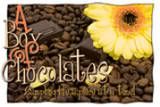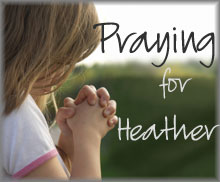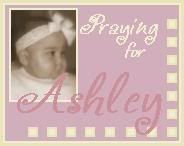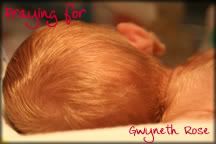
Many of you may know but some may not know the story of my sweet niece Chloe's. Click here to read why these 2 articles touch so close to home for me. In the past 2 weeks I have heard many of my own students talk about riding on their parents lawn mowers and it just makes me cringe when I hear them talk. I have implored them to NOT ride on the lawn mower because it is just so unsafe. They know about Chloe and the accident, so I use that as my visual for them.
My father in law used to work as a lawyer for Snapper (lawn mower company) and he would represent them in court for cases where there was physical harm done to someone. He has seen first hand what can happen when precautions are not taken when using mowers.
So, I ask you to read these articles, seriously consider these recommendations and take action. I write this post because I feel compelled to warn others of the danger of allowing children remotely near lawn mowers of any kind. For your children's sake, please teach them proper safety measures when it comes to lawn mowers!
"The power lawn mower is one of the most dangerous tools around the home. Each year, approximately 68,000 persons with injuries caused by power mowers were treated in emergency departments. More than 9,000 of the people hurt were younger than 18 years. Older children and adolescents were most often hurt while cutting lawns as chores or as a way to earn money.
Lawn mower injuries include deep cuts, loss of fingers and toes, broken and dislocated bones, burns, and eye and other injuries. Some injuries are very serious. Both users of mowers and those who are nearby can be hurt.
To prevent lawn mower injuries to children, the American Academy of Pediatrics recommends the following:
Try to use a mower with a control that stops the mower from moving forward if the handle is let go.
Children younger than 16 years should not be allowed to use ride-on mowers. Children younger than 12 years should not use walk-behind mowers.
Make sure that sturdy shoes (not sandals or sneakers) are worn while mowing.
Prevent injuries from flying objects, such as stones or toys, by picking up objects from the lawn before mowing begins. Use a collection bag for grass clippings or a plate that covers the opening where cut grass is released. Have anyone who uses a mower wear hearing and eye protection.
Make sure that children are indoors or at a safe distance well away from the area that you plan to mow.
Start and refuel mowers outdoors, not in a garage or shed. Mowers should be refueled with the motor turned off and cool.
Make sure that blade settings (to set the wheel height or dislodge debris) are done by an adult, with the mower off and the spark plug removed or disconnected.
Do not pull the mower backward or mow in reverse unless absolutely necessary, and carefully look for children behind you when you mow in reverse.
Always turn off the mower and wait for the blades to stop completely before removing the grass catcher, unclogging the discharge chute, or crossing gravel paths, roads, or other areas.
Do not allow children to ride as passengers on ride-on mowers.
Lawn mower-related injuries to children are relatively common and can result in severe injury or death. Many amputations during childhood are caused by power mowers. Pediatricians have an important role as advocates and educators to promote the prevention of these injuries.
Each year in the United States, approximately 9,400 children younger than 18 years receive emergency care for lawn mower-related injuries. Although most of these injuries occur to older children and adolescents, about one fourth are to children younger than 5 years. Males account for approximately three fourths of these injuries. Ride-on mowers and other power mowers account for 21% and 23% of pediatric mower-related injuries, respectively. More than 7% of pediatric mower-related injuries require hospitalization, which is approximately twice the hospitalization rate for consumer product-related injuries overall. Amputations and avulsions account for 7% of pediatric mower-related injuries. Power lawn mowers caused 22% of the amputation injuries among children admitted to one regional level 1 trauma center. Additional details regarding pediatric lawn mower-related injuries are available in the technical report available online.
RECOMMENDATIONS
Young children must not be allowed to play in or be adjacent to areas where lawn mowers are being used. Children younger than 6 years should be kept indoors during mowing.
Children must not be allowed to ride as passengers on mowers or to be towed behind mowers in carts or trailers. They should not be permitted to play on or around the mower when it is in use or in storage.
Children should not operate lawn mowers until they have displayed the necessary levels of judgment, strength, coordination, and maturity. They should also be educated in mower operation and safety and be supervised by an adult before they are allowed to operate a mower by themselves. Most children will not be ready to operate a walk-behind power mower or hand mower until at least 12 years of age or a ride-on mower until at least 16 years of age."

Committee on Injury and Poison Prevention, 2000-2001
SOURCE
**********
"With spring around the corner, it will soon be time to trim the lawn, but spring also marks the onset of what Johns Hopkins Children’s Center (where Chloe was treated) specialists call lawnmower injury season. Lawnmowers can cause devastating injuries in children and are the leading cause of amputations in teens, Hopkins Children’s experts warn.
'Every spring and summer we see children so badly injured by lawnmowers that they need amputation or extensive reconstructive surgery,' said Rick Redett, M.D., director of reconstructive and plastic surgery at Hopkins Children’s, Maryland’s designated pediatric trauma center where the most severe cases are treated.
Many more children with less serious injuries end up in local emergency departments, Redett said.
Each year, lawnmower accidents send 9,400 U.S. children to the hospital, causing injuries more severe than any other tool or device, research shows. The most common injuries are lacerations, fractures and amputations of the fingers, hands, toes, feet and legs."
Most injuries occur when a person operating a ride-on mower is unaware that a child is behind the mower and shifts into reverse, backing over the child.
Of the lawnmower accidents seen among patients at Hopkins Children’s between 2000 and 2006, 95 percent led to amputations and required reconstructive surgery.
Hopkins Children’s experts offer the following prevention tips:
Keep children under 6 years old indoors while a power mower is in operation.
Don’t allow a child under 12 to use a walk-behind mower.
Keep children under 16 off ride-on mowers, even with a parent.
If you are mowing and see a child running toward you, turn off the mower immediately. Children can fall and slip into the blade, especially if the grass is wet.
Wear protective goggles and close-toed shoes when operating a mower or when near one.
Before mowing, clean the lawn of debris such as sticks and stones, which may get caught in the blades and propelled out.
If injury occurs, call 911 right away and apply pressure to the wound to stop bleeding while you await an ambulance.
Buy mowers with a no-reverse safety feature that requires the operator to turn the mower around instead of shifting into reverse.















No comments:
Post a Comment